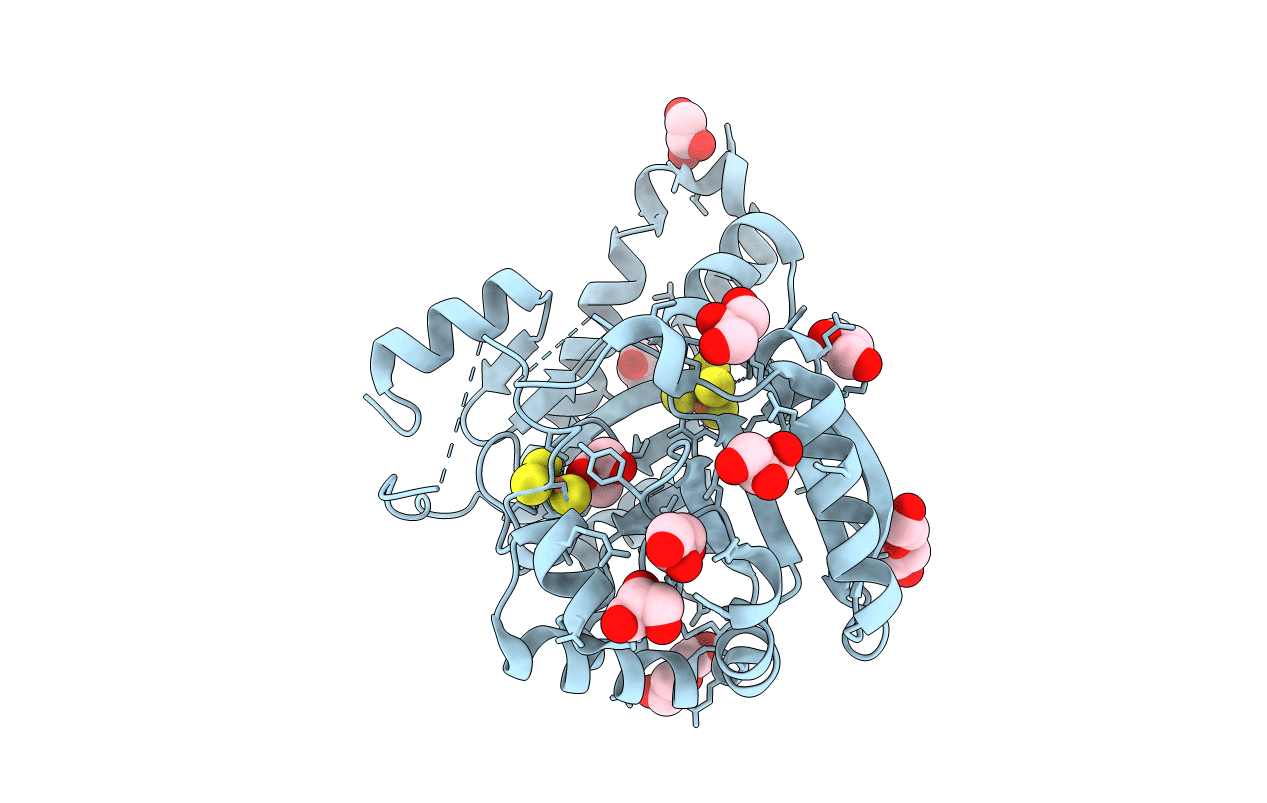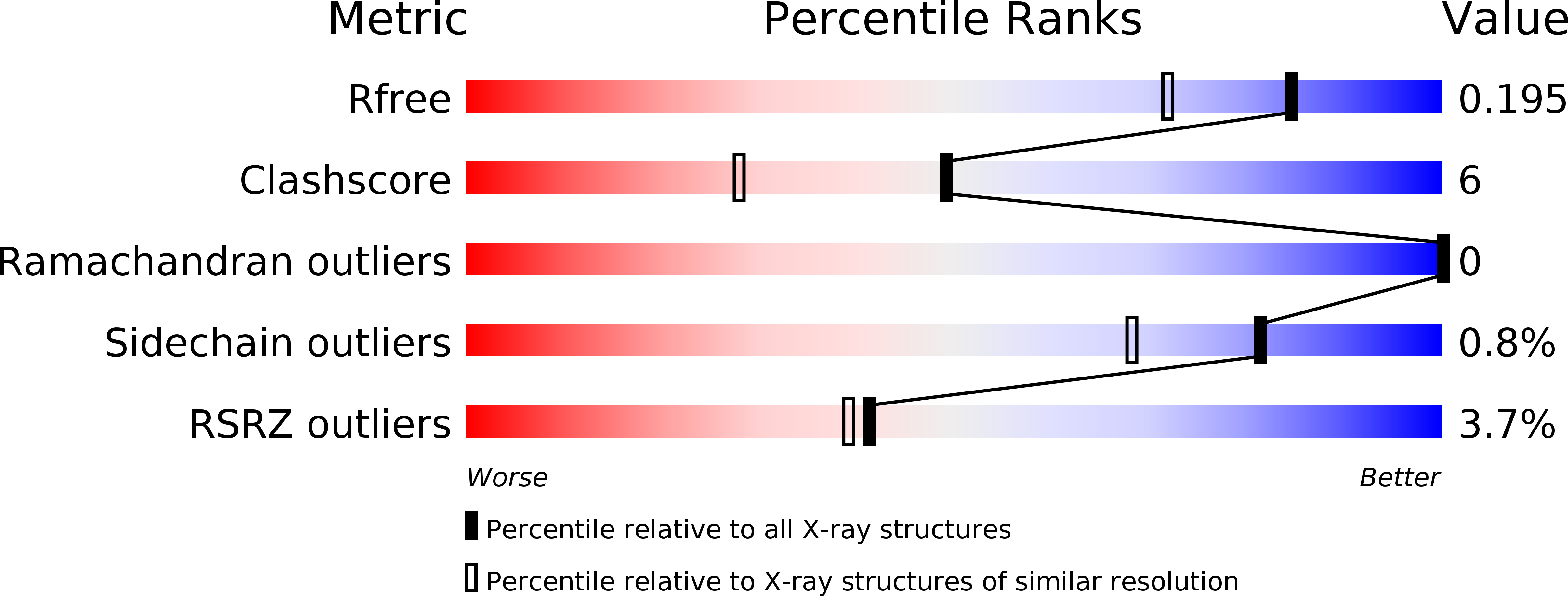
Deposition Date
2018-05-26
Release Date
2018-06-13
Last Version Date
2023-11-29
Entry Detail
PDB ID:
6DJT
Keywords:
Title:
Structure of TYW1 with a lysine-pyruvate adduct bound
Biological Source:
Source Organism:
Methanocaldococcus jannaschii (Taxon ID: 2190)
Host Organism:
Method Details:
Experimental Method:
Resolution:
1.64 Å
R-Value Free:
0.19
R-Value Work:
0.16
R-Value Observed:
0.16
Space Group:
P 21 21 21


